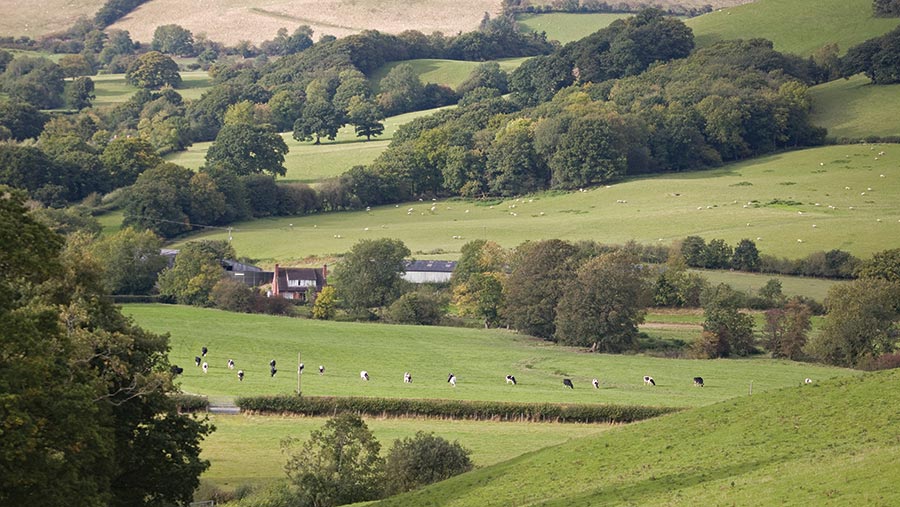Low feedback makes Rics land market survey unviable
 © Tim Scrivener
© Tim Scrivener The Royal Institute of Chartered Surveyors (Rics) has decided not to issue its Rural Land Market Survey results for the first half of 2019 after revealing it was “no longer on a sustainable footing in terms of sample size”.
Rics, together with the Royal Agricultural University (RAU), usually releases biannual reports covering market sentiment and sales data based on submissions from land agents across England and Wales.
However, this year has seen such low feedback from agents on the opinion-based portion of the survey that the team made the decision not to publish the results.
See also: Farmland supply lowest since 2001 foot-and-mouth crisis
Tarrant Parsons, Rics economist, said: “We have been meeting with the RAU to discuss ways to help them boost the sample size, but these do not appear to have been effective.”
Instead, figures showing the average amount paid for farms across the regions of England, and Wales as a whole, have been released.
This price index is based on the full number of sales (250) that took place from January to June this year, according to Rics.
Average price for farmland by region for January-June 2019 (£/acre) |
|
|
East |
10,538 |
|
East Midlands |
8,091 |
|
North East |
6,757 |
|
North West |
9,230 |
|
South East |
15,133 |
|
South West |
11,609 |
|
Wales |
8,508 |
|
West Midlands |
10,377 |
|
Yorkshire/Humberside |
13,478 |
|
England and Wales |
10,619 |
Huge variation in land prices
The value of farms and land across England and Wales averaged £10,619/acre.
This includes equipped farms and properties where the residential value accounts for less than 50% of the overall value.
This was up slightly from £10,519/acre for the second half of 2018 but down from £10,940/acre on the same time last year.
In England, the South East achieved the highest average value for transactions at £15,133/acre, with the North East seeing the lowest average value at £6,757/acre.
South-east England has seen a fairly tight supply of farmland of all types and sizes this year, resulting in a range of frustrated potential buyers, say agents.
The area is popular with rollover, lifestyle and equestrian buyers, and well-established producers and new entrants in the viticulture sector.
Though demand is also strong in the North East, very few acres have been bought and sold, other than a large block of ex-opencast land still in aftercare, says Tim Michie of George F White.
Across Wales, the average value for the first half of 2019 was £8,508/acre.
Slow supply continues
This year has been typified by continued uncertainty over Brexit and future farm policy, which has resulted in both vendors and buyers holding off on making such high-value and emotive decisions.
The Farmers Weekly land tracker, which monitors acres for sale advertised in the magazine, shows overall supply is down by 40% on this time last year, at 81,280 acres.
Agents expect that as this uncertainty dissipates, the market will regain momentum, though it is not clear at this stage whether this will significantly affect land values.
In south-west England, an area popular with farmers and non-farmers alike, Stags has seen an increase in activity from those searching to buy whole farms for lifestyle reasons, with sales being agreed for most of the farms launched in 2019.
Andrew Dodds, associate partner at Stags, said: “Buyers appear to be taking a longer-term view when considering whether to buy farms or land, especially where the opportunity is there to buy acreage that is neighbouring or very nearby.”
Private sales remain a desirable option, with the proportion of deals taking place ranging from 20-50% of all transactions in an area, according to agents.
